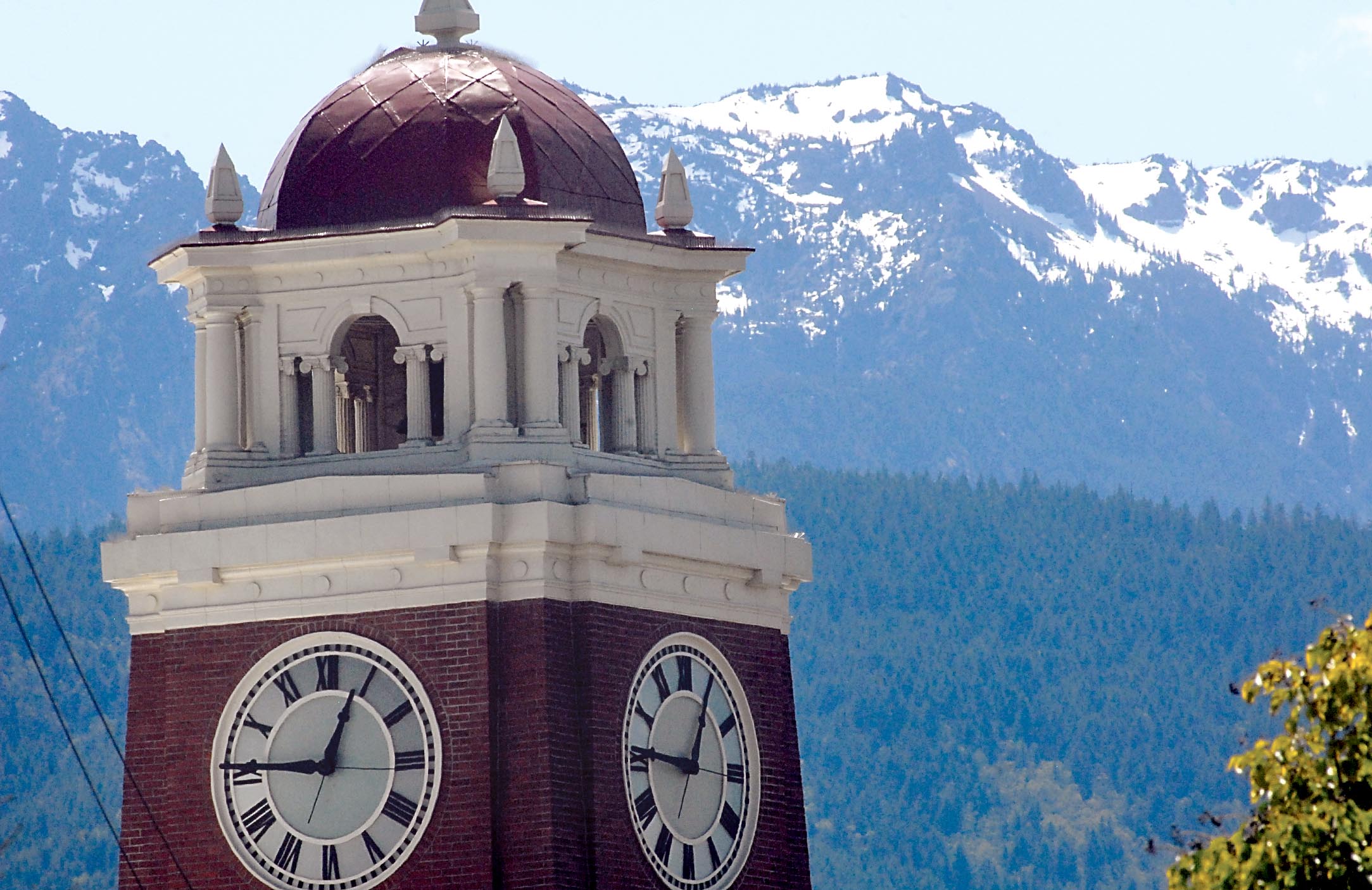The Olympic Mountain snowpack is so low this year that experts are warning of short summer water supplies, rivers possibly too low for fish and more erosion of glaciers.
Conditions are the worst in some 85 years, say hydrologists, and the record-low snowpack will have impacts on wildlife and municipal, private and agricultural water supplies.
The Olympic Mountain snowpack is among the lowest in the state, measuring a mere 1 percent of normal Thursday, according to the U.S. Department of Agriculture’s Natural Resources Conservation Service, which operates four SNOTEL stations to measure water content of snowpacks using a laser system.
Waterhole station, near Hurricane Ridge, showed 0.6 inches of water content in less than an inch of snow, while the Buckinghorse station in West Jefferson County measured 0.3 inches of water content.
Dungeness station, south of Sequim, and Mount Crag station, west of Brinnon, were completely snowless.
The Yakima, Walla Walla and Central Puget watersheds recorded zero percent of normal Thursday.
The meager snowpack shatters records that go back to the 1930s, said Scott Pattee, water supply specialist with the Natural Resources Conservation Service in Mount Vernon.
Low snowpacks occurred in 1977, 1981, 2001 — and in 2005, the former record holder, Pattee said.
“Each of those years, we had a Miracle March [with an unexpected heavy snowfall]. This is going to be a lot worse,” he said.
Gov. Jay Inslee declared Clallam and Jefferson and counties to be among those in emergency drought conditions March 13.
Statewide, snowpack had declined to 17 percent of normal by Thursday, according to the state Department of Ecology.
This is “worse than when the last statewide drought was declared in 2005,” the department said in a news release.
Snowpack acts as a frozen reservoir for river basins, accumulating in winter and slowly melting as a spring and summer water supply for rivers and streams.
“This year runoff from snowmelt for the period April through September is projected to be the lowest on record in the past 64 years [statewide],” Ecology said.
Currently, snow can be seen on the higher peaks. Snowfields tend to remain in high mountain areas protected from the sun year-round.
That high-elevation snow isn’t a significant source of water supply for the lowlands, Pattee said.
And summer heat will burn away the protective snow cover on glaciers and start eroding the glaciers themselves, he added.
Aggravating the situation is the forecast for the summer.
Long-range National Weather Service forecasts indicate that this summer will be warmer and drier than average.
“It will be good for those who want a sunny summer, bad for those who want water,”said Brent Bower, senior service hydrologist with the service in Seattle.
Very low summer and autumn flows are predicted for the rivers around the Olympic Peninsula — about 39 percent of normal in the Elwha River and 37 percent of normal in the Dungeness River, resulting in water shortages in rivers and possible reduction of groundwater in late summer, Bower said.
A big concern is for the summer and autumn pink salmon runs on the Dungeness, where up to 1.2 million salmon expected to return to the Dungeness this year.
“It may be too warm and too shallow. It could be a problem,” Bower said.
Pattee said that in 2005, a series of low dams was constructed in the Dungeness to create water levels high enough for the migrating fish to pass.
“It’s going to be worse than that,” he said.
Bower said the Elwha River is already a foot lower than its typical depth for early May.
The Elwha has changed since the removal of the Elwha and Glines Canyon dams, with more gravel and fewer holes, so much of the river’s summer behavior in a low-snow year is not yet predictable, he said.
The Elwha and Dungeness rivers are the only rivers that have official water level forecasts, he said, but other rivers with sources in the Olympic Mountains, including the Hoh, Bogachiel, Sol Duc, Duckabush,and Dosewallips, are expected to have similar low flows.
“Everyone will need to be aware of conservation,” Pattee said.
Irrigation supply will be the hardest hit, but municipal water users also may be affected, he said.
Sequim-Dungeness Valley Agricultural Water Users, an umbrella organization that oversees the use of Dungeness River water to irrigate land for several thousand water users in the area, has said they are watching the situation closely.
The organization takes water directly from the river and has no storage or alternative water source.
Fred Grant of the Agnew Irrigation District said water users haven’t yet implemented their drought response plan.
“We’re holding our breath and seeing what happens,” Grant said.
Farmers have already sold this year’s water rights for 500 acres of land to the state — agreeing to not irrigate those acres this year, he said.
Grant said as supplies become more meager, residential users will be asked to not water lawns, and farmers will conserve as much as possible.
If the river level gets too low, there will be no more water for irrigation, he said.
Both the Clallam County Public Utility District and the city of Port Angeles have announced early conservation measures.
The PUD is asking customers in the upper Fairview Water District to begin voluntary water conservation measures, while the city canceled a lower summer water rate intended to help residents afford to green-up their yards.
________
Reporter Arwyn Rice can be reached at 360-452-2345, ext. 5070, or at arice@peninsuladailynews.com.

